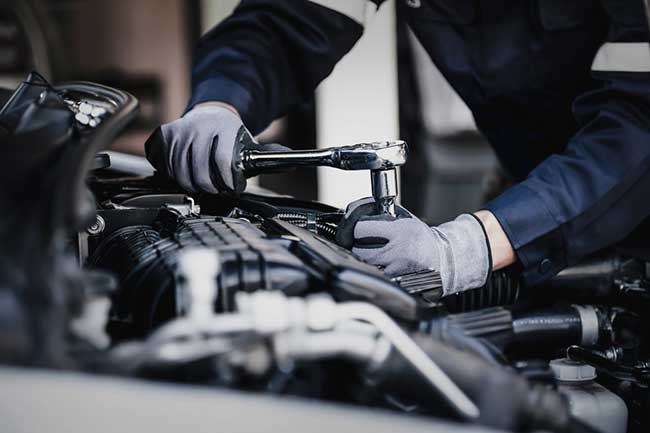Featured
Your automobile's shock absorber is an essential element that enhances your driving experience by supplying control, convenience, and security. Gradually, damage on this system can endanger your car's security and performance. By embracing appropriate upkeep methods, you can prolong the life of your suspension and stay clear of costly fixings. Below's a step-by-step overview to keeping your suspension system in excellent form.
![]()
Leaking Liquid: Oil around the struts or shocks shows they may need substitute. Damaged Springs: Fractures or breaks in the springs can create unequal vehicle height. Rust or Deterioration: Metal elements like control arms and bushings are susceptible to corrosion gradually. If you notice any type of abnormalities, have your shock absorber inspected by a professional technician.
Maintain tires blown up to the suggested stress. Turn tires every 5,000 to 7,500 miles. Equilibrium and align wheels yearly or after hitting splits or aesthetics. Irregular tire wear is an usual sign of suspension misalignment or worn elements.
![]()
Verdict. Appropriate maintenance of your suspension system is crucial for ensuring a safe and comfy driving experience. By conducting normal assessments, changing used components, keeping tire care, and driving properly, you can maintain your suspension in peak condition. Proactive care not just avoids pricey fixings but additionally guarantees your car's longevity and safety and security for every single trip.
- Comprehend the Relevance of the Suspension System. The shock absorber takes in shocks from uneven roads, supports the car's weight, and keeps the tires firmly in call with the roadway. It includes shocks, struts, springtimes, control arms, and bushings, all of which collaborate to make certain a stable and smooth experience. Identifying its relevance is the initial step towards correct care.
- Conduct Normal Aesthetic Examinations. Constant aesthetic checks can aid identify prospective concerns early. Seek:

Leaking Liquid: Oil around the struts or shocks shows they may need substitute. Damaged Springs: Fractures or breaks in the springs can create unequal vehicle height. Rust or Deterioration: Metal elements like control arms and bushings are susceptible to corrosion gradually. If you notice any type of abnormalities, have your shock absorber inspected by a professional technician.
- Address Uncommon Noises and Signs And Symptoms. Uncommon sounds, such as creaking, squealing, or clunking, frequently signal suspension problems. A bouncy experience, difficulty steering, or the vehicle drawing to one side suggests that a suspension part might require attention. Do not ignore these signs; very early detection can prevent additional damages.
- Preserve Proper Tire Treatment. Tires and suspension work with each other to supply a smooth ride. To decrease stress on your shock absorber:
Maintain tires blown up to the suggested stress. Turn tires every 5,000 to 7,500 miles. Equilibrium and align wheels yearly or after hitting splits or aesthetics. Irregular tire wear is an usual sign of suspension misalignment or worn elements.
- Replace Worn-Out Parts promptly. Suspension parts like shocks, struts, and bushings wear out gradually. Makers typically advise changing shocks and struts every 50,000 to 100,000 miles, depending upon driving conditions. Postponing substitute can endanger handling, safety and security, and overall vehicle performance.

- Prevent Overloading Your Vehicle. Surpassing your automobile's weight capacity places excessive stress on the suspension system. This can cause quicker put on and tear on parts like springs and shocks. Constantly inspect your proprietor's handbook for weight limits and avoid overloading.
- Drive Properly. Aggressive driving habits, such as speeding up over splits, taking corners also quickly, or regularly driving on harsh roadways, can harm your suspension. Method cautious driving to minimize wear and extend the life-span of your shock absorber.
- Arrange Expert Inspections. Routine expert examinations are vital for determining surprise problems and guaranteeing optimal performance. Auto mechanics can discover issues that aren't visible throughout a DIY check, such as used round joints or control arm damages.
Verdict. Appropriate maintenance of your suspension system is crucial for ensuring a safe and comfy driving experience. By conducting normal assessments, changing used components, keeping tire care, and driving properly, you can maintain your suspension in peak condition. Proactive care not just avoids pricey fixings but additionally guarantees your car's longevity and safety and security for every single trip.
Latest Posts
Just How Nutrition Shapes Eye Wellness: Trick Insights
Published Jan 19, 25
0 min read
Which Furnishings Materials Are Finest for Sturdiness and Design?
Published Jan 19, 25
0 min read
Artisanal Wooden Doors
Published Jan 19, 25
0 min read